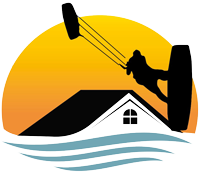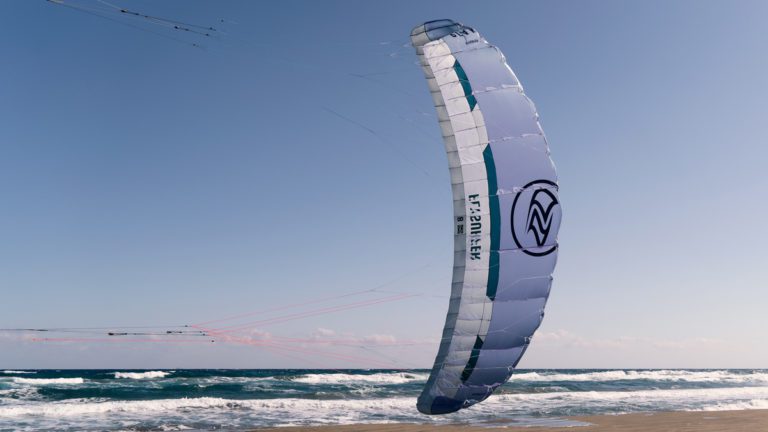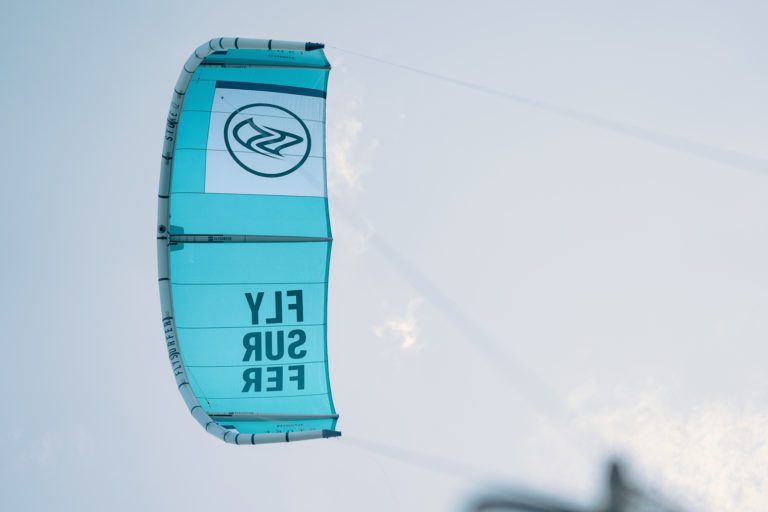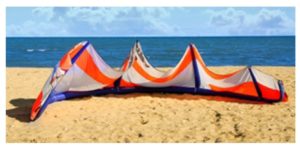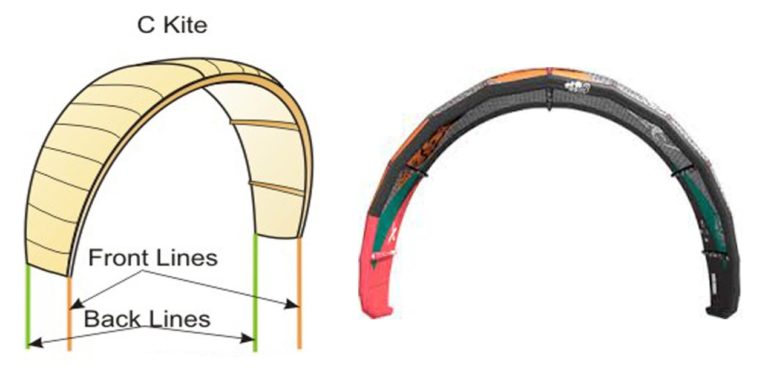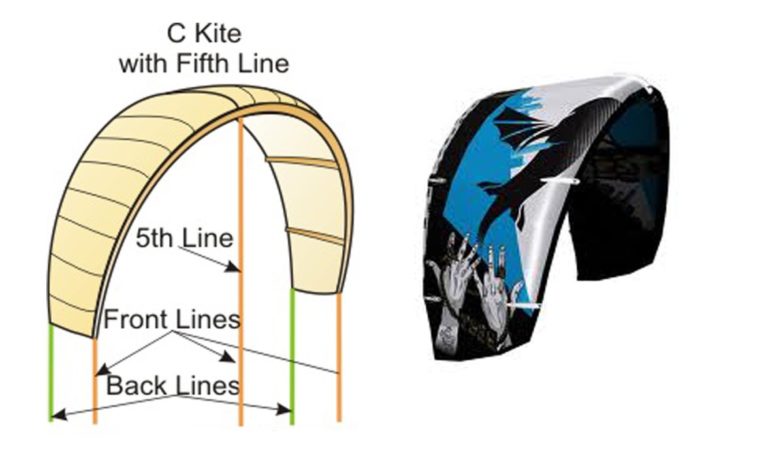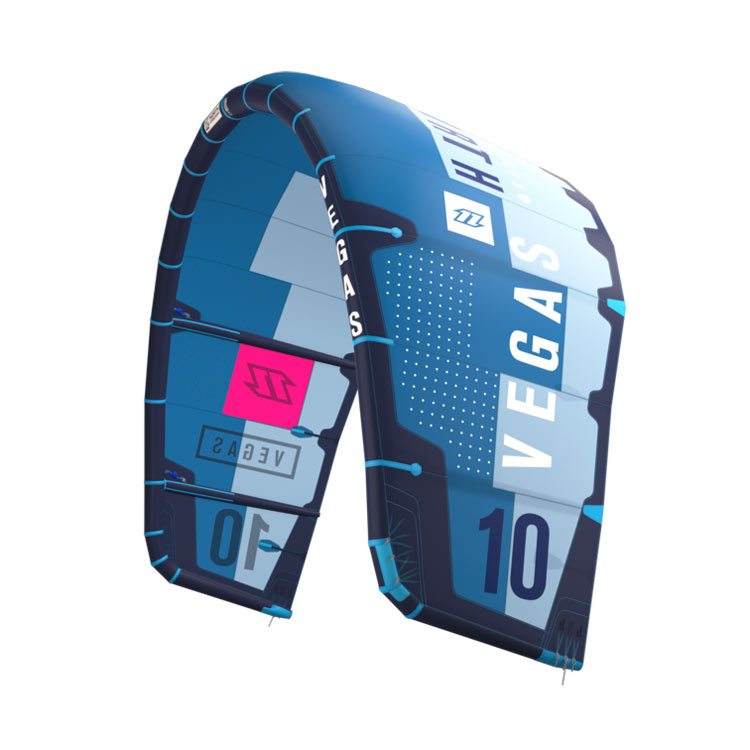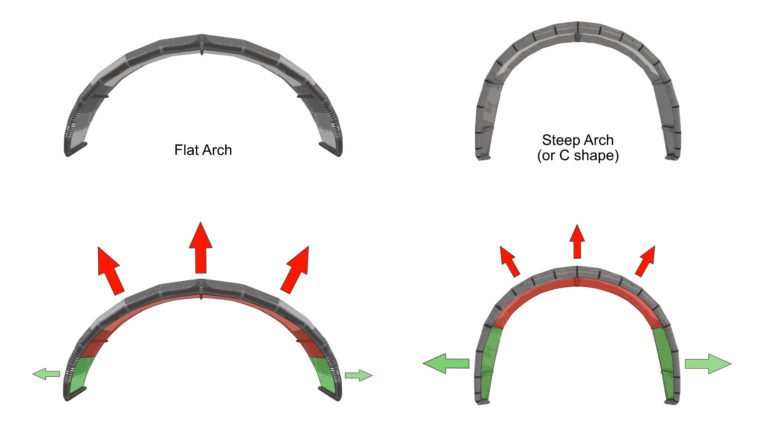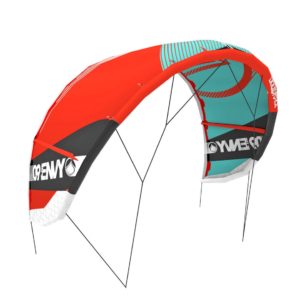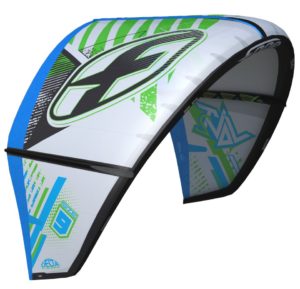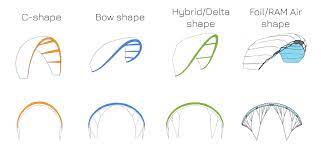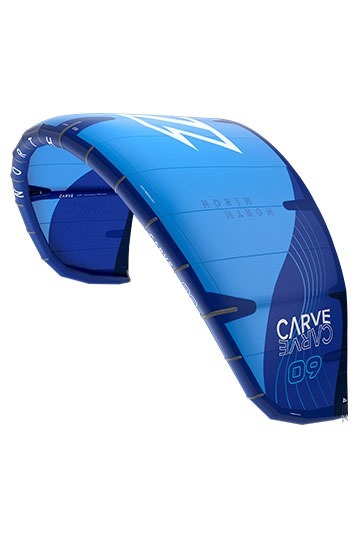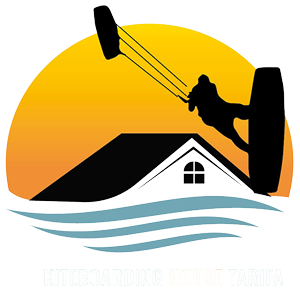The Kiteboarding kite shapes
Foil, LEI, Ram Air , Bow, C, Hybrid, SLE, Delta …
Find out the difference below.
Given the dizzying array of kiteboarding kites available, at times they can seem very confusing. Fortunately, kites can be broken down into two categories based on their design.
1. Foil Kites
– The Classic Foil Kite
– The Valved Foil Kite
You might have to take my word for it, but almost all kites on the market fit into one of these two categories!
2. Leading Edge Inflatable Kites
– The C Kites
– Hybrid Kites
– Bow Kites
– What is a Supported Leading Edge (SLE) Kite?
The C- shape kite
The C- kite is the original kiteboarding kite – up until recently, this was the only kind of inflatable kite on the market. It has square corners and forms a deep C-shaped arc when flying . It gets its characteristic shape from its lines, which are attached at the four corners off the kite
5th Line C- Kite
5th line C– kites come equipped with an extra line that attaches to the leading edge of the kite.
This line helps the rider re-launch the kite from the water, and it acts as an additional safety system to de-power the kite.
An important note about the 5th line is that it does not carry any tension when the kite is in flight- it is simply used to help de-power and re-launch.
Since this line carries no tension, the shape of a 5th line C- kite is exactly the same as a classic C- kite, and all performance characteristics remain the same (except the de-power and re-launch).
Some Hybrid kites have a line that looks identical to a C- kites 5th line, but the difference is that it is under tension.
On a Hybrid, this line can be used to hold the kite in a different shape than a normal C- kite can have, which opens up a whole new range of design possibilities that affect kite performance.
This is why a C-kites 5th line isn’t under tension
C- Kite Advantages:
• The C kite has a very ‘direct’ feel when riding.
C kites can’t de-power as much as Bow or bridled kites, and as a result are constantly pulling and putting pressure on the rider.
This helps the rider feel more connected with the kite, which translates into a more direct feel.
• They provide more performance for their specific wind range.
These kites only fly well in their narrowly specified wind range, so they can be fine-tuned for that
exact range.
This means that these kites are very specialized, which makes for a higher performance kite.
It’s not all good though, as you will see below, a specialized kite is not as good for general riding.
• They are great for unhooked riding.
Expanding on the advantage above, a narrow wind range means that the kite doesn’t need to be sheeted
in and out as much.
This makes them better for riding unhooked, where sheeting cannot be done anyways.
• Their shape maximizes SLED boosting, which improves jumping performance.
C kites can jump faster and with a more explosive pop thanks to what is called SLED boosting.
The definition SLED boosting is far too technical for this page, but here’s a short version :
Compared to Bow kites, C kites are more rounded (or C shaped …), which maximizes the amount of upward lift that the kite can produce; more upward lift produces more upward pull, which launches you off the water more forcefully .
• C kites have a very specific wind range.
It’s a pro/con trait, really. A very specific wind range means that you need more kites to cover all possible winds, and this can get expensive.
In order to span all wind conditions , you might need between 3-5 kites; buying 5 of the cheapest kites can be expensive!
Also, a smaller wind range means you will be rigging kites more often.
If the wind picks up (or dies down) enough that the kite you are using is too big (or too small), you will have to get back to shore and
rig another one.
5th Line C- Kite
5th line C- kites come equipped with an extra line that attaches to the leading edge of the kite.
This line helps the rider re-launch the kite from the water, and it acts as an additional safety system to de-power the kite.
An important note about the 5th line is that it does not carry any tension when the kite is in flight- it is simply used to help de-power and re-launch.
Since this line carries no tension, the shape of a 5th line C- kite is exactly the same as a classic C- kite, and all performance characteristics remain the same (except the de-power and re-launch).
Some Hybrid kites have a line that looks identical to a C- kites 5th line, but the difference is that it is under tension.
On a Hybrid, this line can be used to hold the kite in a different shape than a normal C- kite can have, which opens up a whole new range of design possibilities that affect kite performance.
This is why a C-kites 5th line isn’t under tension
C- Kite Disadvantages:
• Difficult and involved water re-launch.
In order to re-launch, these kites need to be flipped onto their back and piloted to the edge of the wind window.
This procedure can be difficult and involved.
I’m sure we all would rather just ride.
• Less ability to de-power can make C kites unsafe for beginners.
C kites have limited sheeting ability, which means they can’t be de-powered as much as a Bow kites.
You can’t just drop the control bar and have the kite lose its power. Instead the power needs to be controlled more by how the kite is flown, and in an emergency situation it is too late for piloting anyways.
Since beginners do not have a lot of experience piloting big kites, they are almost guaranteed to be overpowered.
Note: C kites still have safety releases, but they lack the ability to dump a lot of power only by sheeting out.
What is a Supported Leading Edge
What is a Supported Leading Edge (SLE) Kite?
You are going to hear this term at one point or another, so let’s define it now.
A supported leading edge kite is any kite that has bridles attached to its leading edge.
This means that Hybrid and Bow kites are both considered SLE kites, even though they are different styles of kites.
A C-kite is not a SLE kite because it has no bridles.
The Hybrid kiteboarding kite was developed in order to merge the benefits of C and Bow kites into one kite.
Since hybrids are a fusion of two different styles of kites, their specific design can vary greatly
– some are almost identical to C-kites, others are similar to rounded Bow kites, and the rest fall somewhere in between they are called Delta shape Kites.
Variable or not, there are two characteristics that all Hybrids have
1. They have leading edge bridles.
A bridle is a line that connects to the front edge of the kite that is under constant tension when the kite is flying.
Because these lines carry some of the load of the kite, they can be used to hold the kite in a different shape than a normal C-kite, which opens up many different design possiblities.
2. They have a convex trailing edge.
The shape of a Hybrids trailing edge is what makes them different from a Bow kite. Hybrid kites have convex trailing edges, while Bow kites have concave trailing edges
Hybribs and C-shapes kites Recomanded Kites for advanced riders. Delta shapes kites are recomanded for beginner & intermediaire riders
This style of hybrid simply tries to maintain the feel and performance of a C- kite, while gaining some of the benefits of having bridles on the kite (greater de-power range, greater wind range, etc…).
The bridles on this style of kite can be very basic, which is why they can be confused with a 5th line C- kite.
Bow Style Hybrid (Sometimes Called a SLE Kite)
This style of hybrid kite generally tends to be more bow-like, without actually being a bow kite. It has more complicated bridles and can vary widely in shape and profile.
Sometimes the only thing keeping this kind of kite from being a Bow kite is the shape of the trailing edge (yes, this difference in shape is enough to have drastic performance differences .)
Like the C kite, the Hybrids design gives it unique flying characteristics .
This style of kiteboarding kite is one of the newest styles on the market.
Its defining characteristic is the shape of the trailing edge, which is concave – if you haven’t checked out the kite shapes page, do so now.
Because of this kites unique shape it looks much flatter when it flies, and is why this type of kite is sometimes called a ‘flat’ kite.
In addition, the shape of this kite is what gives it it’s near 100% de-power and large wind range.
Like the Hybrid kite, the bow style kiteboarding kite has bridles that attach to its leading edge.
These bridles are necessary to help hold the kite in its flat shape – without them, the wind would force the kite into a sharp curve, just like a C- kite.
As i mentioned above, the bow kite’s shape causes it to perform much differently than C and Hybrid kites.
Bow Kite Advantages:
• Bow kites can be de-powered fully or too much powered, don’t pull the Bar !!
Thanks to their innovative design.
Bow kites can be de-powered completely just by sheeting out.
In case you ever need to quickly dump power (i.e. when you get caught in a gust of wind or wipeout on your board) all you need to do is drop the control bar, and the kite will loose all of its power.
• They cover much larger wind ranges.
Another benefit of this kites massive de-power is that they can be used in many different wind strengths.
– all you need to do is adjust the power strap and sheet the kite and not to be over powered Since one bow kite can have you riding in many different conditions, you don’t need as much equipment.
• Bow kites can be easily re-launched off the water. Take care off the backstall or you will have big problems on the water re launch
No need for complicated maneuvers. All it takes to get this thing out of the water is to pull on one of the rear lines; the kite will turn on its wingtip, move towards the edge of the wind window and re-launch.
!! don’t pull the Bar !!
Bow Kite Disadvantages:
• They are not as good for riding unhooked .
• They are not good in turning speed & a strong effort is needed to make it turning :-((
The Bow kites ability to de-power hinges on sheeting; therefore you need to be hooked into the chicken loop to do it.
If you want to ride unhooked, you will need to be in that narrow wind range suited to the size of the kite, which brings you back to the C kite problem of needing a lot of sizes.
